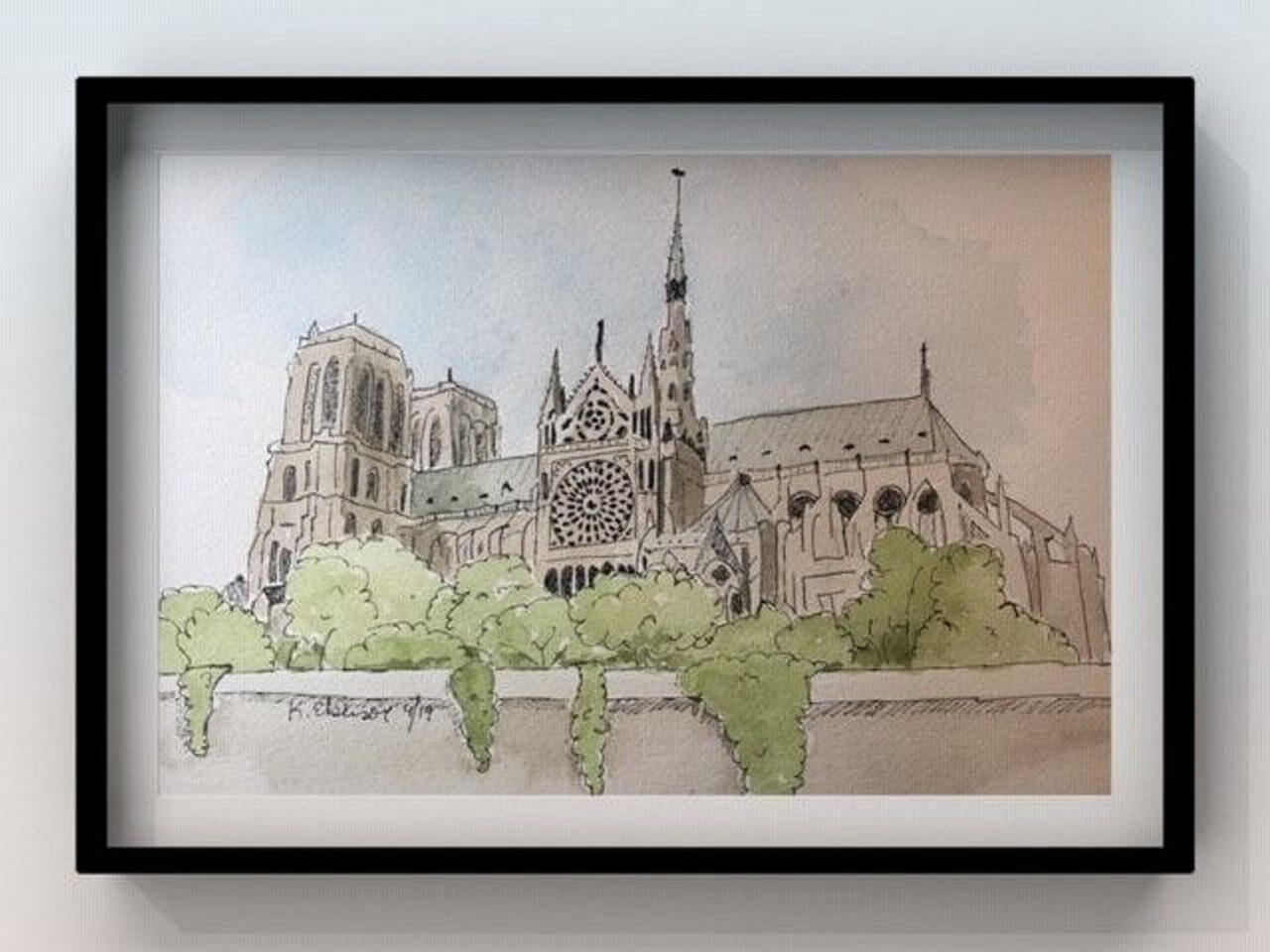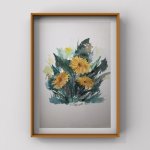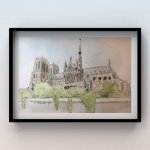Is it possible we have come to the point of saturation with the internet, with social media and the distraction culture in general? Are some of us finally getting to the point of looking for an escape back to the Real? I haven’t looked it up, but I wouldn’t be surprised to find statistics showing that dedicated Facebook and Twitter users are looking up from their black mirrors and wondering what had been so attractive about it all. And what has happened to our real lives?
Statistically, the public’s appetite for more social media looks unending. One source says we’ve gone from 90 to 136 minutes per day on social media, worldwide, between 2012 and 2018. In the U.S., from 2008 to 2017, people have gone from 2.7 hours online per day to 5.9. Or maybe it’s the uglier side of it that is putting us off. When Twitter did its unpopular reconfiguring of its platform last week, it was a bit surprising how many people responded with “Oh, good. This is so bad that it will make it easier for me to give it up.” More and more people — shocked, perhaps, by the viciousness of the Twitter-Swarm phenomenon and the vitriol of the trolls — are describing the whole online world as a “poisonous swamp,” or variations thereon.
If at some point the internet just dissolved into kitten and puppy videos, hair tutorials, gardening and cooking shows on YouTube, would we really miss it? Maybe I’m being hopelessly naïve in a peculiarly Gen-X way — the last generation raised on a perfect balance of daily Star Trek reruns, Saturday morning cartoons, and library books — but I’m not sure we would. Are we getting sick of living our lives with our faces stuck into the screen?
This is a question that a longtime internet friend of mine answered for me this weekend when I asked her, “Hey, what’s with all the painting all of a sudden?” Her forthright answer resonates: “I’m choosing to make time for painting over spending time scrolling through social media on my phone,” a way to “step back into the real world and away from the contrived world of media and internet.”
Katrina Fernandez Ebersole is about as normal a person as you can imagine. She’s a single mum, with a regular job, a son, a mortgage, and a dog. She’s a Catholic convert living in North Carolina who has been kicking around the ’net, on the peripheries of the traditionalist Catholic argue-o-sphere as long as I have. She’s been a blogger — as The CresCat — and a Catholic agony aunt columnist for Aletiea, and she still writes occasionally for the National Catholic Register. Her down-home, unpretentious, regular-folks tone is refreshingly natural in an overwrought online Catholic world of people fancying themselves polysyllabic experts in everything.
A few months ago, Katrina started posting photos on Twitter and Facebook of her watercolor paintings, and as she’d never given the slightest hint of ever having done anything like this before, surprised everyone by how good at it she is. When asked, she just said, “Well, someone gave me a set of watercolors for Christmas, and I just started watching tutorial videos on YouTube, and Bob’s your uncle.” (That was from memory, so she probably didn’t literally use the Canadian expression “Bob’s your uncle,” but that was the gist.)
But knowing her a little bit, and knowing something about how much uninterrupted concentration and time it takes to learn to do a decent painting, I kept wondering. It seemed like a bigger deal than she was letting on, maybe a fairly significant life shift.
Simply, if you’re doing a lot of art, you’re not spending all your time looking at the internet. In fact, because nearly everyone is spending nearly all his free time looking at the internet, Katrina, in her low-key way — with her rather sweet flowers, landscapes, and architectural drawings and paintings — was doing something rather radical, maybe even somewhat subversive.
When she quit freelance writing for online Catholic media, she felt a real lack of a creative outlet, and she just started painting again. Just like that. A few months ago, she started a Patreon page and a website where she has posted some rather charming videos of her own, and she intends to do more, like offering some of her paintings as prints.
As it turns out, Katrina studied art (without bragging about it at all online!) in a very serious way in college, and as so many have found, that was precisely what put her off art. She found out the hard way what everyone does: the official — especially academic — art world has been taken over completely by the same kind of banal modernist ideology that plagues the Church. She told me her experience was identical to that of Paul Foxton, a British artist who has been chronicling his own return to the study of classical drawing and painting techniques.
Foxton writes, “When I was at college in the 1980s, we weren’t taught to draw. Abstraction and conceptual art were the dominant forms. Performance art wasn’t my thing. I liked to draw. At the end of my first year of college I had so little to show for my time there that they threw me out. It’s a pretty typical story for people with some skill at drawing who went to art college at that time and became discouraged. A whole generation of artists have come up without being taught how to draw and paint. Many stopped being artists at all.”
Katrina told me her art college was in the same situation in the late ’90s and early ’00s. “It was a very hostile environment for any student interested in classical art.” And she said it was the same in high school and in her magnet school for the arts. “In all honesty, that education left me with a huge disdain for the art world, enormous student debt, and zero technical skills.”
She encourages younger people interested in art not to put too much stock in the ideological nostrums of this academic art world, assuring them, “It’s OK to find your own way of doing things. Not every artist or student learns the same way.
“I come from a generation that believed the recipe for success was high school, college, job. But that recipe’s changed, and there are countless resources available for a fraction of what universities charge. If any young people are pressured to follow that antiquated model of education, I encourage them to look at the possibilities and find a good mentor.”
Asked if she feels her painting is connected in some way to her Catholic faith, Katrina responds, “Absolutely.”
“My faith is what it is today because of art. When I was a kid, maybe seven or eight, I saw a triptych of the Last Judgment at a local museum. If it hadn’t been for the religious imagery in museums and in books I studied, I am not so sure I would be a Catholic today.”
She — maybe unconsciously — echoes Tolkien when she says it’s bigger than mere visual influences: “When I paint, I get to participate in the processes of creation. Painting is like meditative prayer, like manuscript-illuminating monks.”
She can “shut off my inner monologue and put all my mental energy into the tiniest details.”
“The greatest benefit to painting is that I am working on my observation skills. Art really truly changes the way you view the world. It fosters an appreciation for even ordinary mundane things.”
And the effects? “I’ve never been a patient person or someone who is known to surrender control, attributes that make for a terrible Christian. Painting has given me a means to practice this discipline.”
As for social media — including YouTube, the font of all watercolorist tutorials — she acknowledges that for people wanting to become better artists or better Catholics, it can be a double-edged sword. But these days, she uses her “artist’s eyes to sort out the good and beautiful, casting the rest like bad wheat to the fire. It’s just important to remember that social media isn’t real.”
“Maybe not everyone is a watercolor artist, but I know that there is some passion deep in us all waiting to be awakened be it learning to cook, garden, or sew. It’s that process of creating and nurturing something from start to finish that is so phenomenally rewarding and countercultural to the desire for instant gratification. I just hope to inspire people to put down their phones and try that one thing they’ve always wanted to learn. That’s how painting is changing my life, by teaching me to live.”







